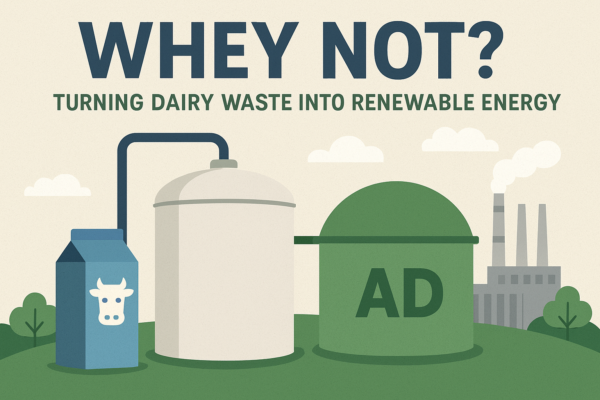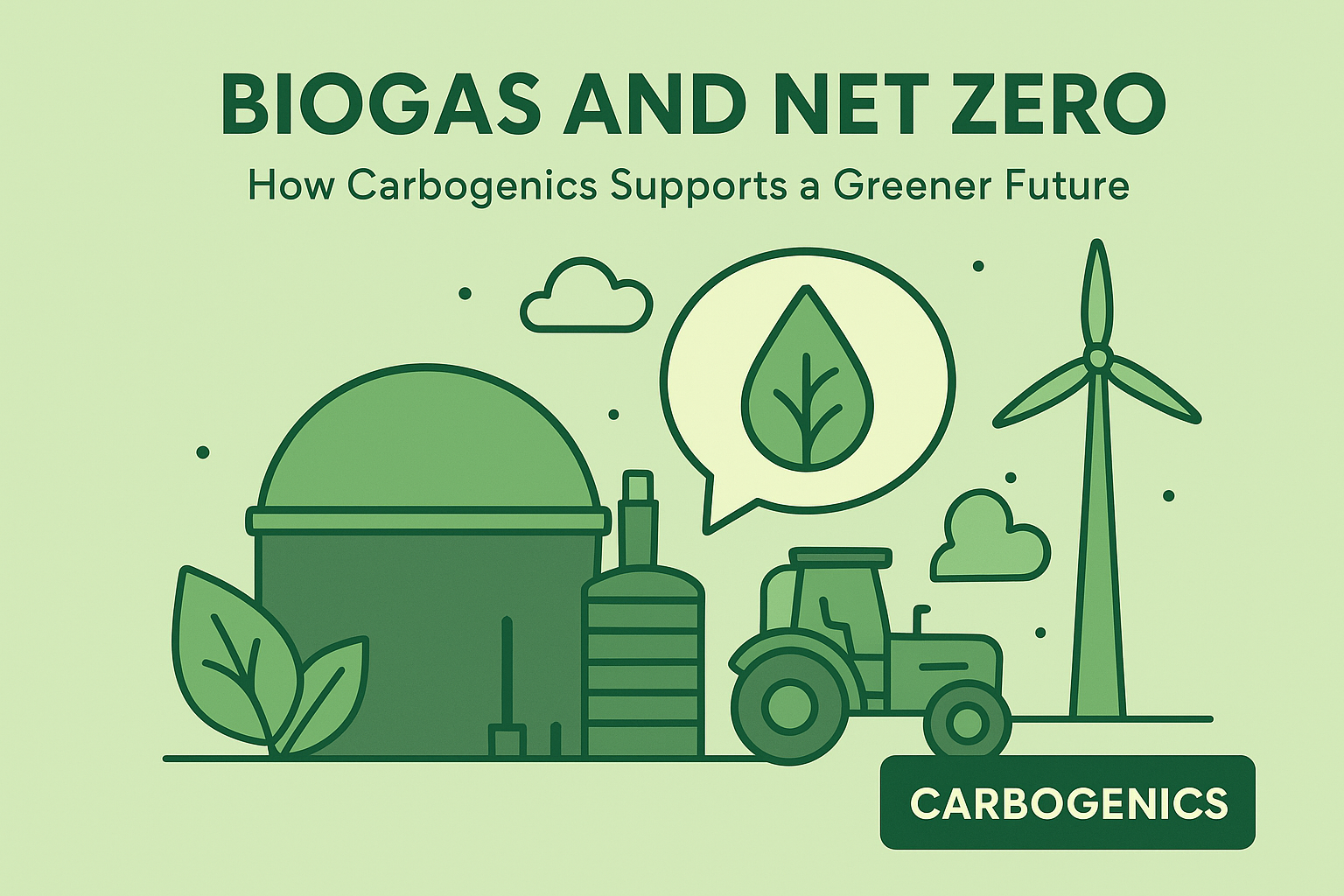In this article, we’ll explore the key factors that influence AD performance and offer tips for optimisation. Additionally, we’ll highlight how incorporating Carbogenics’ CreChar can further enhance your digestion process.
Key Operating Parameters for Optimal Digestion Efficiency
1. Temperature
Maintaining the right temperature is crucial for anaerobic digestion. Most digesters operate in one of two temperature ranges: mesophilic is typically (30-40°C) or thermophilic, typically (50-60°C) although temperatures outside of these ranges can be tolerated. Each range has its advantages:
- Mesophilic Digestion: More stable and requires less energy, but slower digestion rates.
- Thermophilic Digestion: Faster digestion and higher biogas yields, but more sensitive to temperature fluctuations and higher energy requirements.
Optimisation Tip:
Choose the temperature range that best suits your feedstock and operational capacity. Ensure consistent temperature control to prevent fluctuations that can disrupt microbial activity leading to reduced biogas production.
2. pH Levels
The pH level inside the digester directly affects microbial activity. Different microbes have different pH requirements so the optimum pH is really a compromise to keep the complex system as happy as possible. An optimal pH range of 6.5-7.5 is generally recommended for most anaerobic digesters though some can operate perfectly well up to a pH of 8.0. Deviations from this range, especially a drop in pH can inhibit microbial activity and reduce biogas production.
Optimisation Tip:
Regularly monitor the buffering capacity of the digester by measuring the FOS:TAC ratio. This will allow you to prevent a pH catastrophe. Do not overfeed or increase feedstock inputs too quickly. Buffers like lime or sodium bicarbonate to help maintain stability are useful in emergencies.
3. Organic Loading Rate (OLR)
The Organic Loading Rate refers to the amount of organic material added to the digester per unit volume per day. Optimising the OLR is critical for maintaining a balance between microbial activity and feedstock availability.
Optimisation Tip:
When increasing the OLR do it gradually to avoid overloading the system. Monitor biogas production FOS/TAC ratio and volatile fatty acids (VFAs) to ensure the system is not becoming acidified or inhibited.
4. Hydraulic Retention Time (HRT)
Hydraulic Retention Time is the average time that the feedstock remains in the digester and is closely linked to the organic loading rate. It can influence the extent of organic matter breakdown and biogas production.
Optimisation Tip:
Adjust HRT and based on the biodegradability of your feedstock. For readily degradable materials, a shorter HRT may be sufficient, while more complex materials may require longer retention times.
5. Mixing
Proper mixing ensures uniform distribution of microorganisms and feedstock, preventing stratification and enhancing contact between microbes and organic matter.
Optimisation Tip:
Implement efficient mixing strategies to avoid dead zones and ensure consistent microbial activity throughout the digester, it can also help to reduce incidents of foaming. Mechanical mixers or gas recirculation systems are commonly used.
6. Nutrient Balance
Microorganisms require a balanced supply of nutrients, including carbon, nitrogen, phosphorus, and trace elements. An imbalance can lead to nutrient deficiencies or toxic conditions, hampering microbial activity.
Optimisation Tip:
Conduct regular nutrient analysis of your feedstock and supplement as necessary. Products like NutriMeth® provide balanced trace element supplements to maintain optimal nutrient levels.
7. Inhibitor Management
Certain compounds, such as ammonia, sulphides, and heavy metals, can inhibit microbial activity and reduce digestion efficiency. Managing these inhibitors is essential for stable operations.
Optimisation Tip:
Monitor and control inhibitor levels through careful selection of feedstocks, feedstock pretreatment or the use of adsorbents like biochar to reduce toxicity.
The Role of CreChar in Enhancing Digestion Efficiency
In addition to optimising the above parameters, incorporating Carbogenics’ CreChar can further enhance your anaerobic digestion process. CreChar is a high-quality biochar that acts as an adsorbent and microbial carrier, offering several benefits:
- Enhanced Biogas Production: CreChar’s porous structure provides an ideal habitat for microbial communities, boosting their growth and activity, leading to increased biogas production.
- Improved Process Stability: CreChar helps buffer pH fluctuations and adsorb inhibitory compounds such as ammonia and heavy metals, ensuring a more stable digestion process.
- Nutrient Retention: CreChar enhances the retention of valuable nutrients in the digestate, which can be recycled as high-quality fertilizer.
By incorporating CreChar into your AD operations, you can achieve superior performance and sustainability.
Conclusion
Optimising the key operating parameters of temperature, pH, OLR, HRT, mixing, nutrient balance, and inhibitor management is essential for improving the efficiency of your anaerobic digester. Additionally, adding Carbogenics’ CreChar to your process can provide significant benefits, further enhancing biogas production and process stability. For more information on how CreChar can benefit your anaerobic digestion operations, contact us or visit our website.




